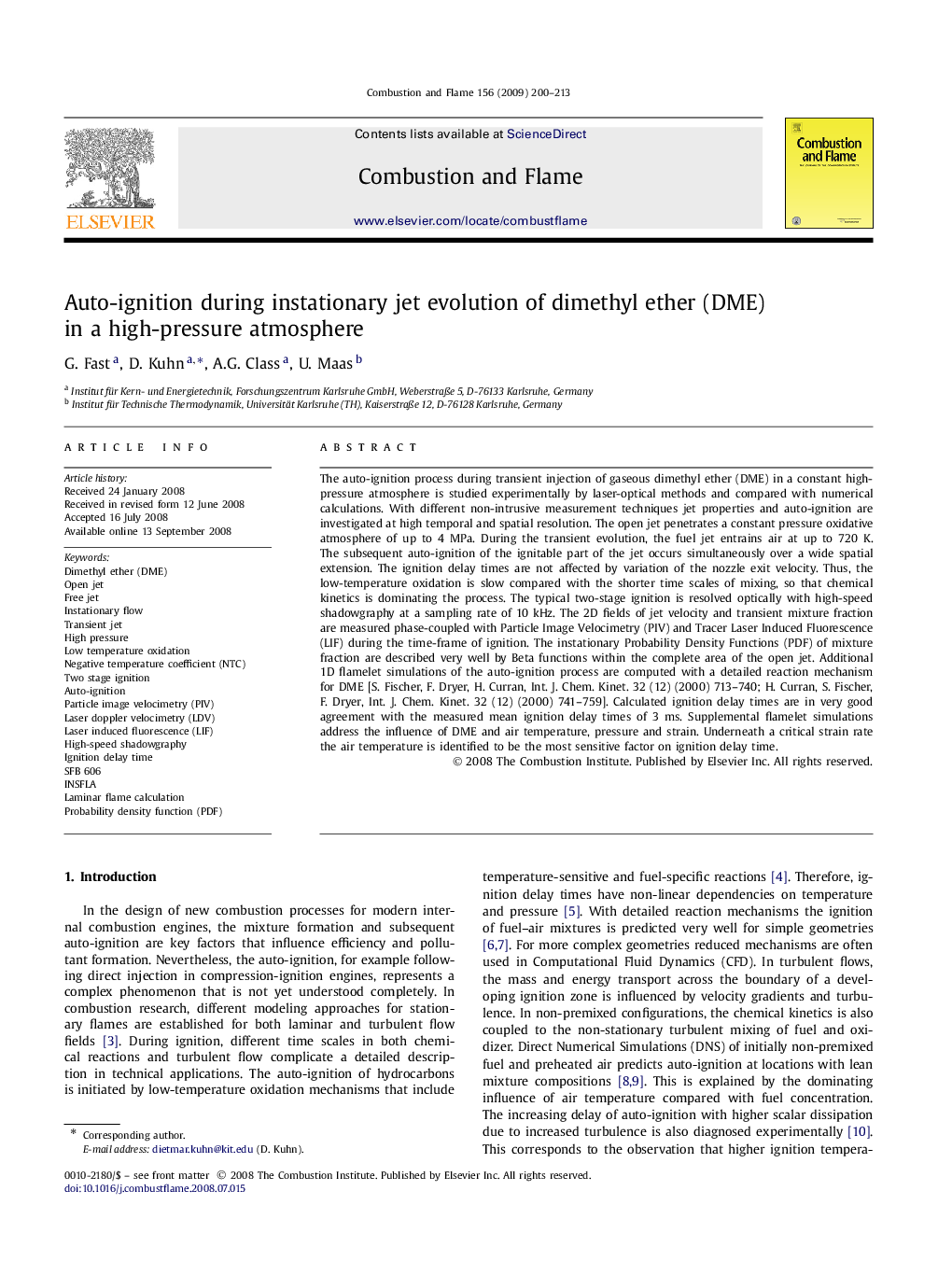| کد مقاله | کد نشریه | سال انتشار | مقاله انگلیسی | نسخه تمام متن |
|---|---|---|---|---|
| 169491 | 458008 | 2009 | 14 صفحه PDF | دانلود رایگان |

The auto-ignition process during transient injection of gaseous dimethyl ether (DME) in a constant high-pressure atmosphere is studied experimentally by laser-optical methods and compared with numerical calculations. With different non-intrusive measurement techniques jet properties and auto-ignition are investigated at high temporal and spatial resolution. The open jet penetrates a constant pressure oxidative atmosphere of up to 4 MPa. During the transient evolution, the fuel jet entrains air at up to 720 K. The subsequent auto-ignition of the ignitable part of the jet occurs simultaneously over a wide spatial extension. The ignition delay times are not affected by variation of the nozzle exit velocity. Thus, the low-temperature oxidation is slow compared with the shorter time scales of mixing, so that chemical kinetics is dominating the process. The typical two-stage ignition is resolved optically with high-speed shadowgraphy at a sampling rate of 10 kHz. The 2D fields of jet velocity and transient mixture fraction are measured phase-coupled with Particle Image Velocimetry (PIV) and Tracer Laser Induced Fluorescence (LIF) during the time-frame of ignition. The instationary Probability Density Functions (PDF) of mixture fraction are described very well by Beta functions within the complete area of the open jet. Additional 1D flamelet simulations of the auto-ignition process are computed with a detailed reaction mechanism for DME [S. Fischer, F. Dryer, H. Curran, Int. J. Chem. Kinet. 32 (12) (2000) 713–740; H. Curran, S. Fischer, F. Dryer, Int. J. Chem. Kinet. 32 (12) (2000) 741–759]. Calculated ignition delay times are in very good agreement with the measured mean ignition delay times of 3 ms. Supplemental flamelet simulations address the influence of DME and air temperature, pressure and strain. Underneath a critical strain rate the air temperature is identified to be the most sensitive factor on ignition delay time.
Journal: Combustion and Flame - Volume 156, Issue 1, January 2009, Pages 200–213